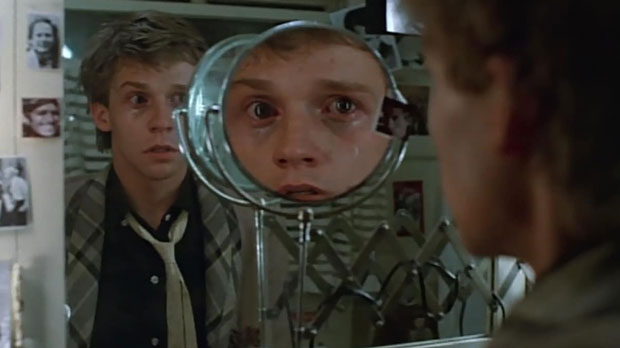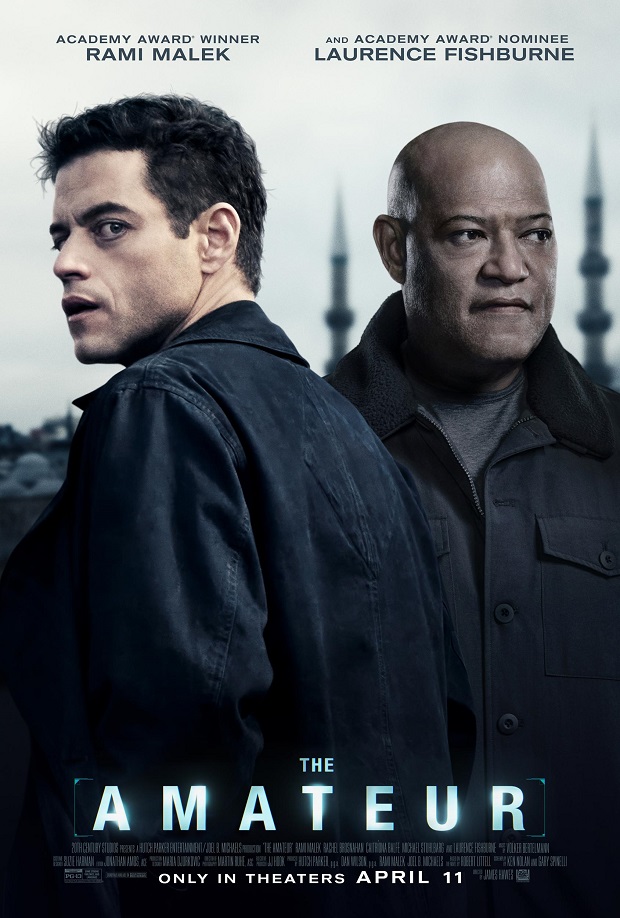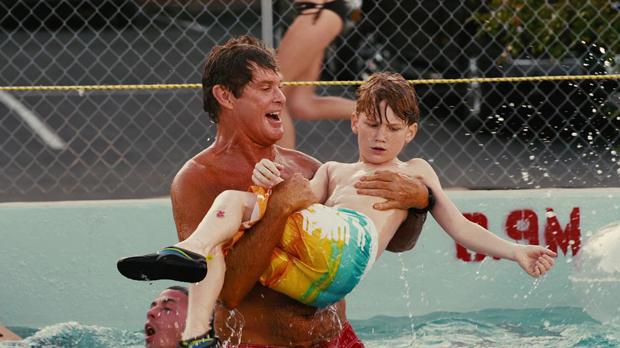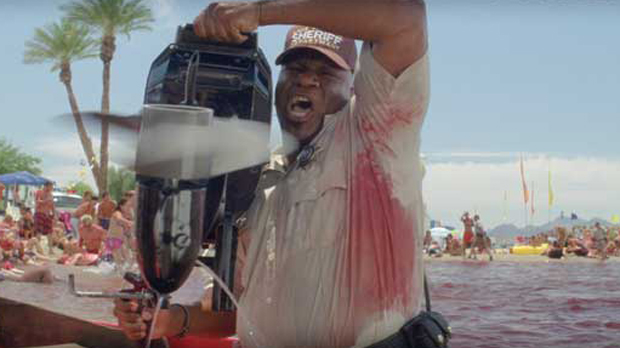 Fade to Black (1980) American Cinema/Horror-Thriller RT: 102 minutes Rated R (violence, language, brief nudity and sexual content) Director: Vernon Zimmerman Screenplay: Vernon Zimmerman Music: Craig Safan Cinematography: Alex Phillips Jr. Release date: October 17, 1980 (US) Cast: Dennis Christopher, Tim Thomerson, Normann Burton, Morgan Paull, Gwynne Gilford, Eve Brent Ashe, James Luisi, Linda Kerridge, John Steadman, Marcie Barkin, Mickey Rourke, Peter Horton, Hennen Chambers, Melinda Fee, Anita Converse, Mews Small. Box Office: $2.8M (US)
Fade to Black (1980) American Cinema/Horror-Thriller RT: 102 minutes Rated R (violence, language, brief nudity and sexual content) Director: Vernon Zimmerman Screenplay: Vernon Zimmerman Music: Craig Safan Cinematography: Alex Phillips Jr. Release date: October 17, 1980 (US) Cast: Dennis Christopher, Tim Thomerson, Normann Burton, Morgan Paull, Gwynne Gilford, Eve Brent Ashe, James Luisi, Linda Kerridge, John Steadman, Marcie Barkin, Mickey Rourke, Peter Horton, Hennen Chambers, Melinda Fee, Anita Converse, Mews Small. Box Office: $2.8M (US)
Rating: ***
It’s easy for me to sympathize with Eric Binford, the lonely social outcast at the center of the psychological thriller Fade to Black. He’s an intriguing character. A bona fide cinephile, he’s the complete embodiment of alienation. He has no friends. Everybody thinks he’s weird. All his life, he’s been abused, bullied and made fun of by everybody around him- his boss, co-workers and the aunt that raised him since birth. He spends all his spare time watching old movies in his bedroom, a sanctuary that resembles a movie memorabilia museum. For him, reel life is preferable to real life. He often recedes into a world made up of characters and scenes from old movies. As strange and unsettling as it sounds, I totally get Eric. Never mind that he also happens to be a psychopathic killer.
Dennis Christopher (Breaking Away), in the performance of his career, plays Eric. Some would call him a loser. His life is all about movies. It’s easy to understand why; everything else in it sucks. He still lives with Aunt Stella (Ashe, Going Berserk), a mean, shrewish old lady in a wheelchair who constantly berates him. He works at a film distribution warehouse for a boss (Burton, Diamonds Are Forever) who’s always on his case about his latest screw-up. One of his co-workers, Richie (Rourke, Angel Heart), gets his kicks from giving Eric a hard time. He just can’t catch a break.
Then Eric meets a model (Kerridge, Surf II) who looks just like Marilyn Monroe, his favorite movie goddess. In fact, her name is Marilyn. She accepts his invitation for a date, but accidentally stands him up. It’s all he can take. He experiences a complete psychotic break that begins with him killing Aunt Stella in a scenario right out of Kiss of Death- i.e. the infamous wheelchair down the stairs scene. After that, he starts going after his oppressors dressed as famous movie characters- e.g. Dracula, Hopalong Cassidy, the Mummy and Cody Jarrett, the character played by James Cagney in White Heat.
In a subplot, criminal psychologist Dr. Moriarty (Thomerson, Trancers) tries to establish a pattern to the killings only to meet resistance from a closed-minded police captain (Luisi, Murphy’s Law) who has no time for the doctor’s hippy mumbo-jumbo. Unfortunately, this part of Fade to Black is a weak link. It’s not as well-developed as it should be. Also, it’s the source of a big narrative gap. The story goes right from the cops not knowing who the killer is to them searching Eric’s house. There’s no explanation as to how they figured it out. It’s possible somebody at the scene of the final murder gave the police a description of the man dressed as a 40s gangster, but even that’s a little shaky.
When Fade to Black focuses on Eric, it’s great. This is mainly due to Christopher’s bold, brilliant performance. What’s most sad about it is that it’s gone largely unnoticed by too many people. The movie was a commercial failure. Critics weren’t exactly bowled over by it either. Roger Ebert gave it a positive review citing Christopher’s performance and the humanizing of minor characters like Marilyn. She’s not just some dumb blonde bombshell that dumps on Eric for no reason. She seems genuinely sorry she forgot their date. HOWEVER, herein lies another one of the movie’s story problems. At the end, when Eric lures her to a photography studio to reenact The Prince and the Showgirl, she doesn’t appear to recognize him. Or maybe she does, I’m not sure. I wish this had been made clearer.
Writer-director Vernon Zimmerman (Unholy Rollers) endows Fade to Black with neat stylistic touches like the deft blending of reality and fantasy in scenes where Eric gets his revenge on his tormentors. The one that stands out the most for me is when he confronts his bullying co-worker dressed as cowboy hero Hopalong Cassidy. Look at how it’s staged and lit like a movie. Notice how the backlighting singles out Eric as the hero. This is clearly what his fantasy looks like in his mind. I don’t even mind when the story gets out of control with bits like Eric driving a vintage gangster car to a barbershop to rub out a famous producer (Paull, Blade Runner) who stole his story idea. Dressed in a 40s gangster suit, he plugs him full of holes with a tommy gun. Where did he get these things and how could he afford them? On second thought, who cares? For a movie buff like me, it’s fun to watch the creative ways Eric comes up to kill his enemies.
As you can tell, I enjoyed Fade to Black very much. It’s legitimately suspenseful and at times, darkly funny. I LOVE the premise! It’s a clever idea made believable by Christopher’s incredible performance. He’s not the usual horror movie slasher. He’s a sad young man, an awkward social outcast with a head full of movie trivia. We’re made to understand why he’s the way he is. We even sympathize with him. At the end, when he’s standing on the roof of Mann’s Chinese Theater mimicking Cody Jarrett’s death scene before a crowd of onlookers and police, you can’t help but feel it’s a fitting end to a character that lives vicariously through the movies. If not for the underdeveloped police investigation, Fade to Black would be perfect. As it stands, it’s a good movie.




